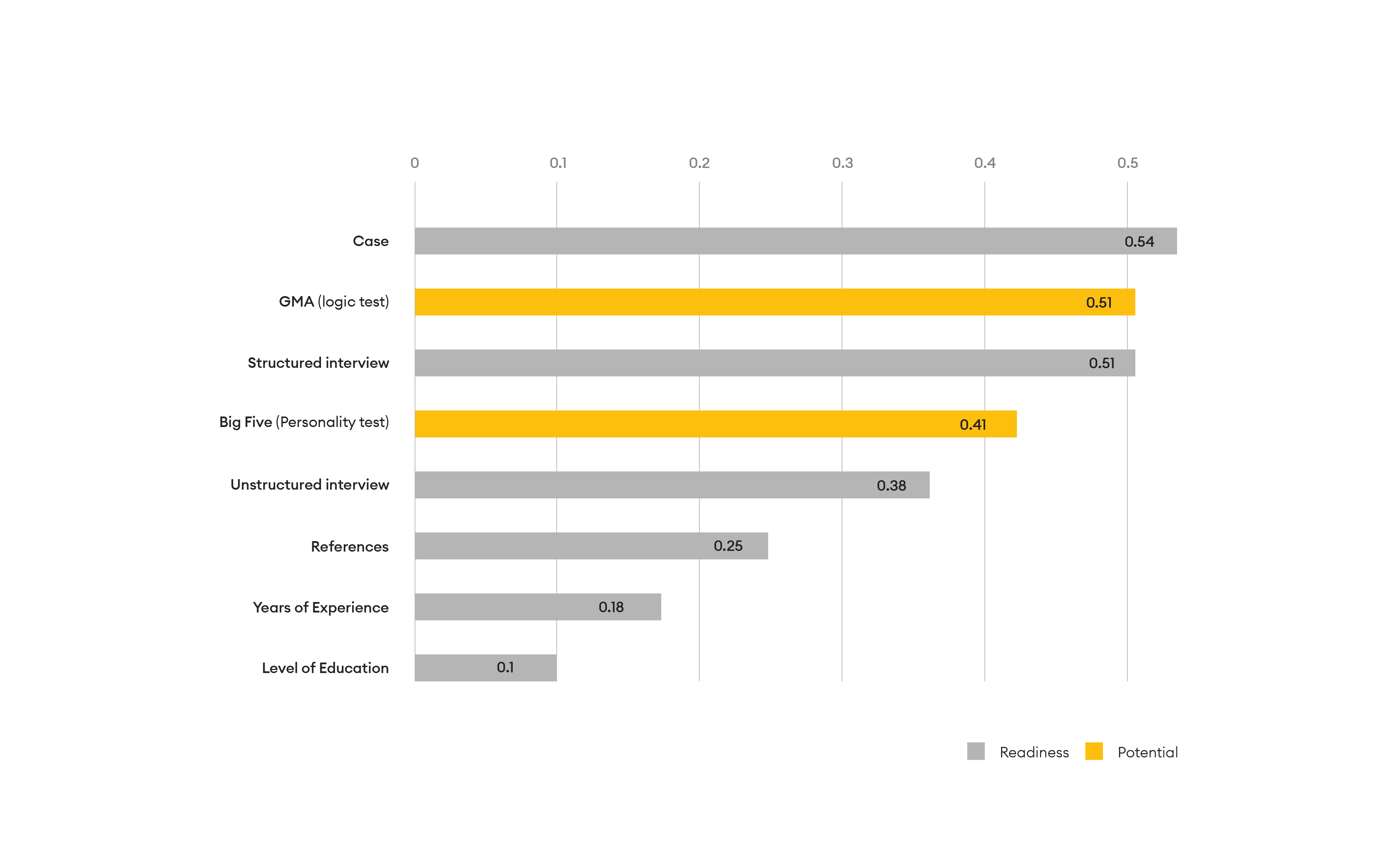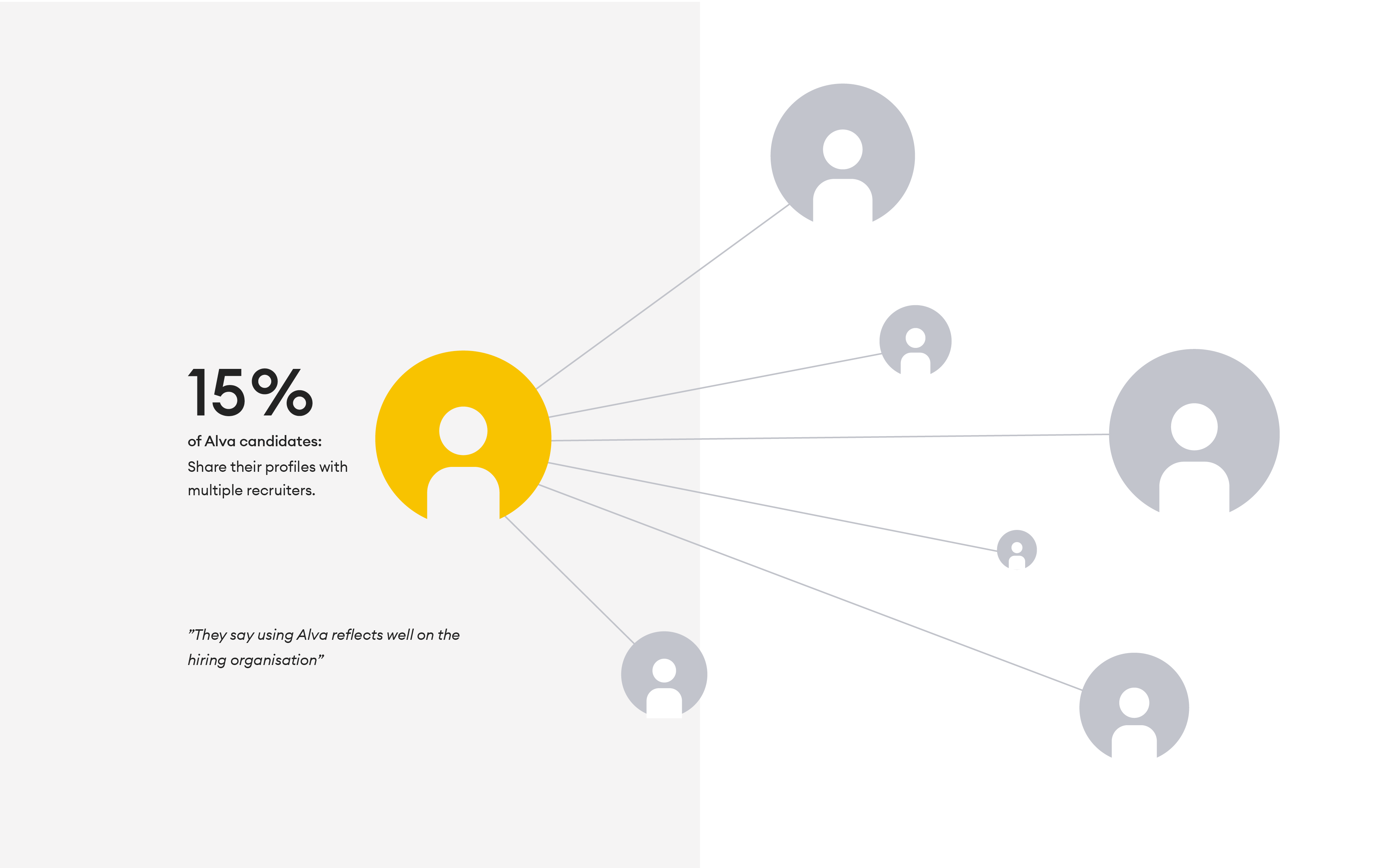Hiring: the struggle
But on more occasions than we’d like to admit, we didn’t make the right choice of who to hire. And this could have cost us anything from US$25,000. Why no upper limit? We feel it’s impossible to quantify the cost of the wrong decisions being taken, and the long-term ripples of making a bad hire.
And let’s not forget the human cost of being in the wrong job. No-one wants to be on either side of that conversation.
Why were we struggling? Like most organisations, we were using CVs, applications and cover letters. We were looking at the past to predict the future.
A Better Way.
We knew there was a better way to cut through the matrix of ‘CV action buzzwords’, of trying to compare CVs that run skills first vs chronologically. Of CVs possibly written by consultants running anything from 1 page to 3 pages long.
When Alva started, our goal was to offer customers the tools for assessment that would help them do much better than we did in the past. Early on, we realised that a combination of two tests - a Big 5 personality test and a test of general mental ability (GMA) - would be our foundation.
But why these two, and why only these two?
Put simply, the Big Five & GMA are the most well-validated and evidence based selection tools out there. They work! By adding in more tests to the mix, you don’t get more useful information and insight: you get what statisticians call “noise”.
What’s noise?
Like static! It doesn’t add anything and simply distracts you from what’s important.
The Big 5 Model of Personality.
The Big 5 is a model - or system - that can help us talk about different parts of people’s personalities. Defined in the 1960s but brought into the workplace in the 1980s, the Big 5 is a reliable tool that helps researchers and employers to understand how personality affects individuals and groups.
It’s used to better understand anything from ‘which kids can wait 10 minutes to eat a marshmallow’ (spoiler alert - ones who learn to distract themselves), eyewitness recognition in criminal investigations and even in relation to gender and sleep.
It measures 5 personality characteristics:
Openness to experience
Conscientiousness
Extraversion (being outgoing)
Agreeableness
Emotional stability
Why do so many people use it?
Simply put, the Big 5 is - both in the everyday sense, and in the scientific sense - reliable. We can ask someone the same questions on week 1, then week 12 and week 432, and their answers will, by and large, be the same.
Like a spirit level you use to check that a picture is straight, you know that the spirit level works because it gives you the same results every time you use it.
So the type and quality of tests you use for hiring really matters! If you’re using a psychometric test to help you to make a decision on whether or not someone is going to be a good match with your organisation, don’t you need to know that the test well
How do you know it works?
Researchers from many different interests have used it and validated it. So that means they’ve tested their own tests and found that it works. Time after time and, provided you translate the questions to make sure that you’re sensitive to cultural norms, the Big 5 is a good way to assess personality across the world
What is GMA?
General Mental Ability, or GMA are different terms for what is also known as general intelligence. First defined in the early 20th Century to look at children’s abilities to undertake their schoolwork, psychologists have been improving and iterating their tests to gauge accurate assessments of GMA.
How do GMA tests work?
The tests are usually based on abstract patterns sorted in matrices (or patterns), as it’s believed that this enables candidates problem solve when you don't know what to do.
As with the Big 5, GMA tests are a commonly understood and reliable metrics for assessing candidate potential.

GMA, when measured in conjunction with other metrics (such as the Big 5, work tests and interviews), as you can see above, is an excellent predictor for who is going to do well at work. And when you think about it, it’s not that unexpected: GMA reflects the ability to interpret new information, draw the right conclusions, and learn new things. These are fundamental capacities to perform in basically any job.
We want to help recruiters and candidates to see past the obvious (and often biased) assumptions that we make when faced with something like a CV.Humans are endlessly fascinating and unknowable.
One process = less noise
By concentrating on the one combination of validated, replicated and trusted Big 5 + GMA, our attention is best served in continuing to nurture our algorithm.
Nurturing an algorithm?
Yes! Our team of psychometricians are constantly working with the code to see what works, what’s helpful, what’s not (seriously - their bedtime reading is psych journals 😎). We know that the science is always changing and there will be new insights and learnings. By keeping it simple, we keep it the best.
As a modern Big 5 psychometric test provider should, we use Item Response Theory to ensure that, as candidates take the test, the right questions are asked of each candidate, allowing them the best chance to shine. Maintaining the IRT’s relevance is essential, and that is why we dedicate so much time to it.
By allowing candidates and recruiters to learn more about what makes a good candidate on the individual and the team level, we’re both empowering people and making a smoother, more efficient hiring process.
What’s the result?
Net result? For the candidate - a test that is quicker and more targeted. 15% of our candidates share their profile with multiple recruiters and say using Alva reflects well on the hiring organisation.

For the recruiter? A concise report on each candidate with results that are simple to understand (and no 2 day long training processes needed). [Pic of the screen with shortlist].
Your short list
When you’re ready to meet your short list, you’ll have
- a succinct briefing on each candidate
- Explanation on why they are a good match
- 6 pages per candidate - around 40% the industry norm for executive search
We know that we’re giving you the concise, targeted information about readiness and potential that we wish we had in our old jobs.
Helping you to find candidates who have so much to offer drives us. We make sure that our customers are always one step ahead, through our continually updated, iterative algorithm, our easy to navigate interface and our concise reports - easy to understand with no days of training needed.
By concentrating on the two test areas that really matter, we invest in and nurture our tests, giving you the insights you need to make your best decision.
Making it work
We know that science can’t tell you everything. Our customers love the concise, targeted and human reports we deliver about their shortlist. Why? Because we care about helping recruiters and candidates to find the right person for the right job. When that happens, everybody wins.
Fewer people are going to be like us at our old organisations, that sinking feeling growing in your stomach as you realise that you’ve hired the wrong person and you’ve got to have *that* conversation.
Let’s make sure you have access to the best pool of candidates, free from subjectivity. Let’s get going.






